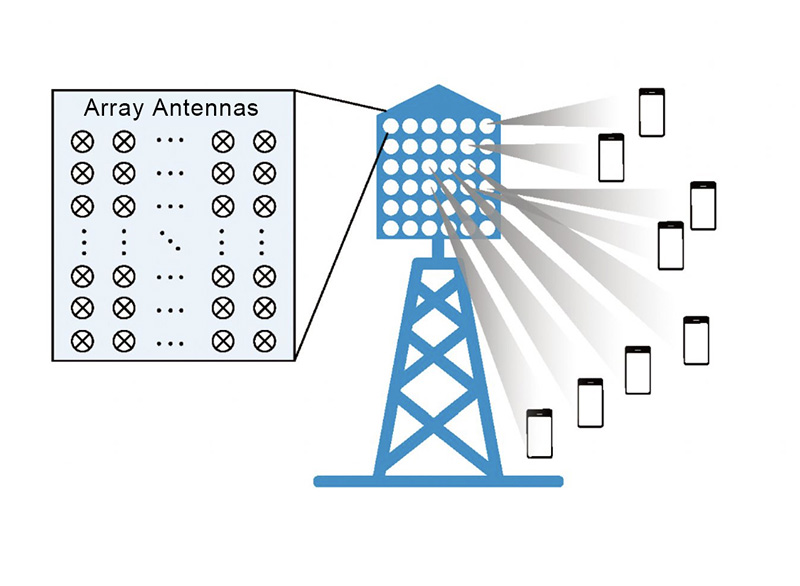Longyue Qu and Hyeongdong Kim from Hanyang University, Korea, talk to Electronics Letters about their paper Circularly polarised MIMO ground radiation antennas for wearable devices, page 189.
Tell us about your fi eld of research and what applications interest you.Our research focus is antenna theory and design for portable devices. With the miniaturisation of antennas in mobile devices and higher requirements on radiation performance for wireless communications, antennas that use printed circuit board ground planes for electromagnetic wave radiation offer promising solutions to such requirements. In mobile communications, both the application environment and the conditions of antenna implementation for mobile devices are very harsh. Therefore, one of our most exciting pieces of research is the development of smallsized ground radiation antennas with multiple functions, e.g., multiple-input multiple-output (MIMO) technology and polarisation performance, which could be a necessary technology for the next-generation communications.

What is the background to the work presented in your Letter.
In mobile communications, signal propagation degrades in harsh environments. MIMO tech nology, employing multiple antennas, is suitable to satisfy high-speed data transmission and reception for an increasing number of users. Furthermore, as is the case of present MIMO antennas, linearly-polarised waves suffer from multipath interferences and polarisation mismatch that affect signal strength and reliability of the overall radio communication link. For these reasons, circularlypolarised MIMO techniques can be considered as an interesting alternative, especially for mobile communications, where the users are continuously changing their positions with respect to base stations.
What advance have you reported in your Letter?
We present a circularly polarised MIMO ground radiation antenna with polarisation diversity performance for wearable devices. The novel advance is the technique in which a high performance MIMO antenna is implemented by producing circular polarised waves. Based on the ground radiation technique, a simple and miniaturised loop-type antenna can excite both the horizontal and vertical ground modes of the printed circuit boards to produce electromagnetic wave radiation, while the quadrature phase difference between the two ground modes is provided using a metal strip.
Thus, high isolation can be achieved without using supplementary structures, and low correlation is guaranteed due to the opposite directions of the circular polarised waves. In this way, the proposed circularlypolarised MIMO antenna can satisfy the requirement of next generation communications for higher transmission and reception performance.
What do you think the impact of this work will be in the short and longer terms?
In comparison to many other MIMO antennas, in this Letter, we made circular polarised MIMO antennas possible with an improved performance in a smaller volume for mobile devices. The key point behind the advance of this work is based on the operation mechanism of the proposed ground radiation technique. The fi rst and the most important thing to realise is that a small antenna in mobile devices is working more like an electronic component rather than a radiator, and the real electromagnetic fi elds at longer distances are generated by the printed circuit board. Therefore, it is easy to understand that the circular polarised waves in fact come from the orthogonal ground modes in printed circuit boards, and the quadrature phase difference is provided by manipulating the ground mode by a simple metal strip. Not only miniaturisation but also multi-functions can be achieved, if we notice the functions of the antenna and the ground plane.
In the longer term, a smart way to design small antennas for mobile devices lies in how smartly we are using the ground plane as a radiator.How are you planning to develop this work and what else are you working on?
We are now planning to develop a more simple and versatile method for circular polarised antennas that would be applicable to all mobile devices for better performance. Our aim is to develop vari ous types of ground radiation antennas, e.g. ultrasmall antennas, MIMO, radiation pattern control and polarisation control, to satisfy diverse require ments of next generation communications.
How do you think mobile antennas will develop over the next ten years?
Mobile antenna engineering is developing very fast and antennas are becoming ever more compact, while having more functions. These requirements could be made possible by radiating other electrical or physical platforms. The ground plane is the simplest and the most effi cient platform for small antenna implementation. With the recent proposal of ground radiation antennas and related researches, the ground radiation technique is now accepted by many mobile antenna engineers. Over the next decade we expect that antennas for mobile devices would be invisible or integrated in the printed circuit board just like other electronic components.

